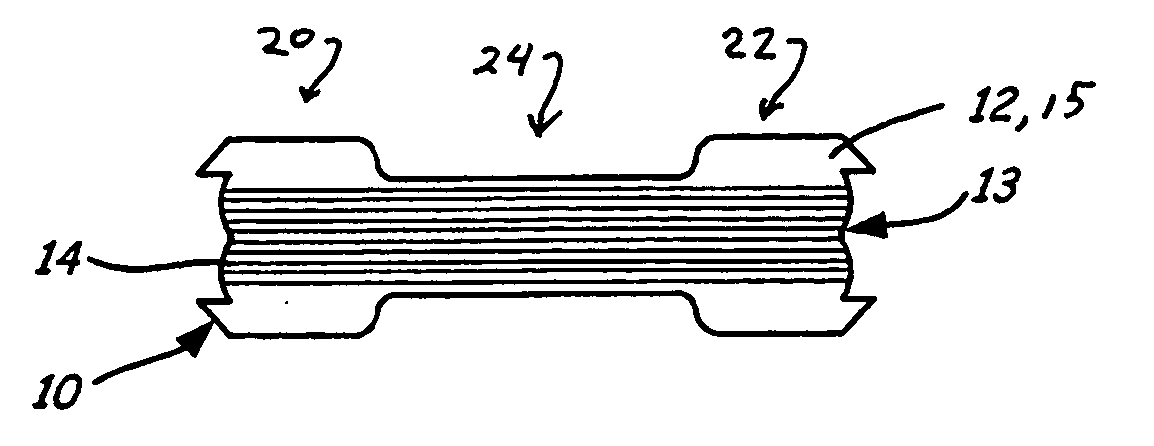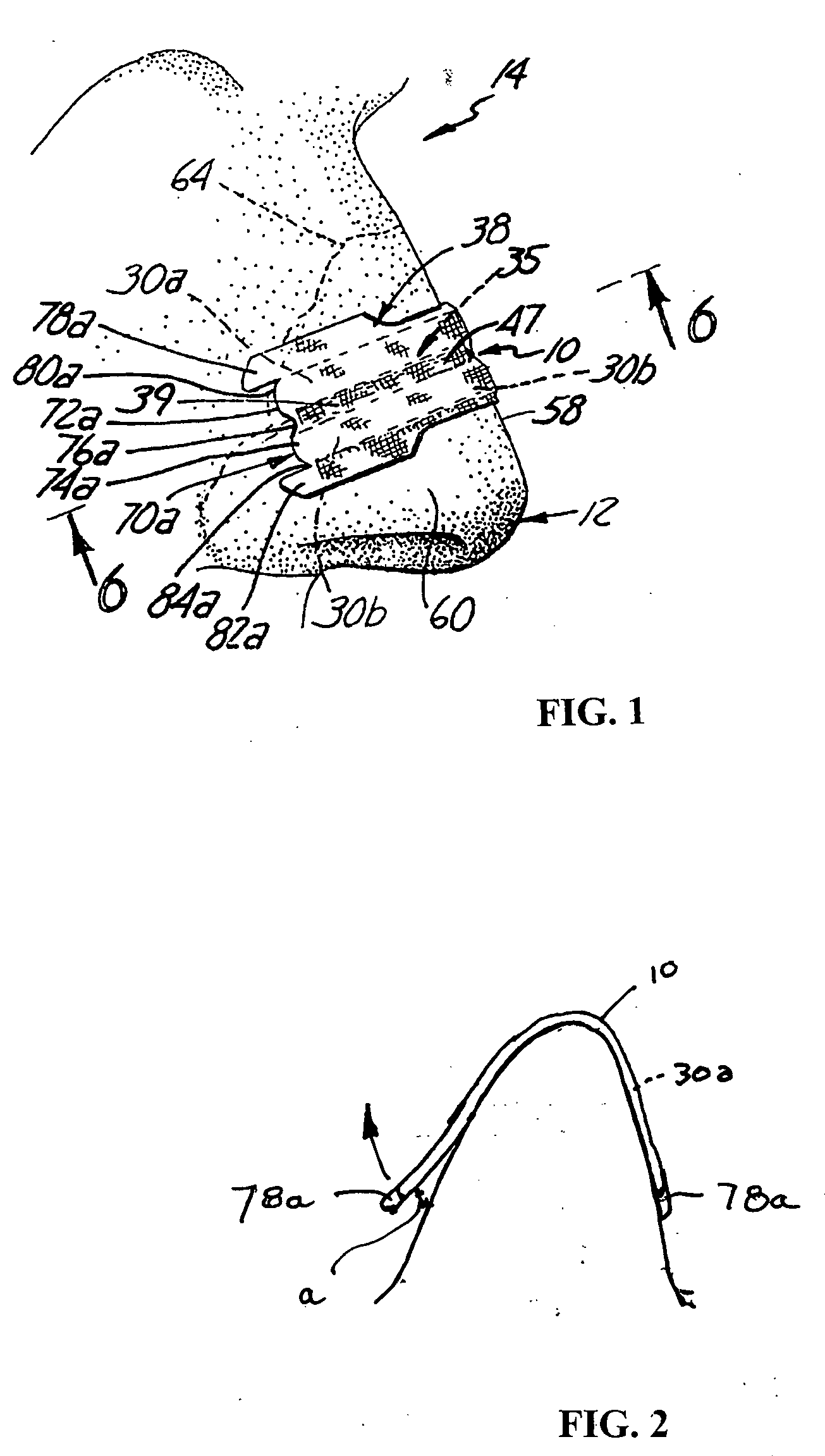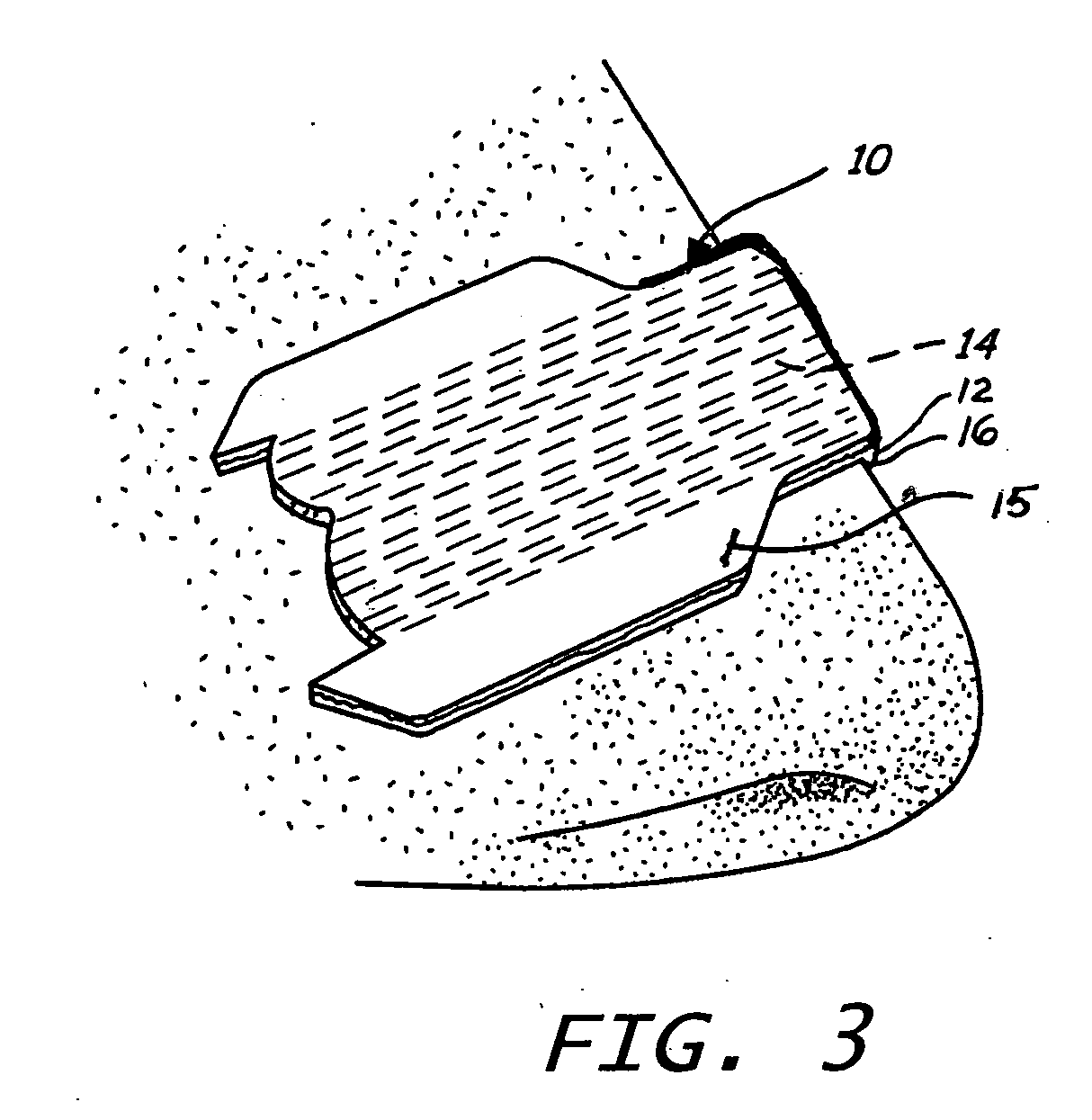Multiple filament nasal strip with high peel angle release
a nasal strip and multi-filament technology, applied in the field of nasal dilators, can solve problems such as irritation or damage to the nasal skin surface, and achieve the effect of reducing the risk of infection
- Summary
- Abstract
- Description
- Claims
- Application Information
AI Technical Summary
Benefits of technology
Problems solved by technology
Method used
Image
Examples
Embodiment Construction
[0017] As illustrated in FIGS. 3-8, the present invention includes a nasal dilator 10. The nasal dilator 10 defines a truss member including at least a flexible strip of base material 12, a resilient element 13. An adhesive 16 is used to secure the truss member to nasal surfaces of a user. The truss defines a first end region 20 and a second end region 22 coupled to the first end region by way of an intermediate segment 24. The flexible strip of base material 12 is preferably formed of an interwoven piece of fabric that allows the skin of he nose to breath to maximize comfort and minimize irritation. As an alternative, the strip of base material 12 may be formed of a plastic film. The truss member may also include a flexible strip of top material 15 so that the resilient element is disposed between top and bottom strips of material.
[0018] The truss member may be made of rubber, vinyl, cloth, soft plastic, or any other material known in the art to be pliable under the conditions for...
PUM
 Login to View More
Login to View More Abstract
Description
Claims
Application Information
 Login to View More
Login to View More - R&D
- Intellectual Property
- Life Sciences
- Materials
- Tech Scout
- Unparalleled Data Quality
- Higher Quality Content
- 60% Fewer Hallucinations
Browse by: Latest US Patents, China's latest patents, Technical Efficacy Thesaurus, Application Domain, Technology Topic, Popular Technical Reports.
© 2025 PatSnap. All rights reserved.Legal|Privacy policy|Modern Slavery Act Transparency Statement|Sitemap|About US| Contact US: help@patsnap.com



